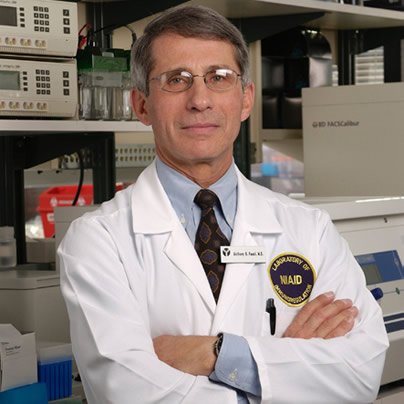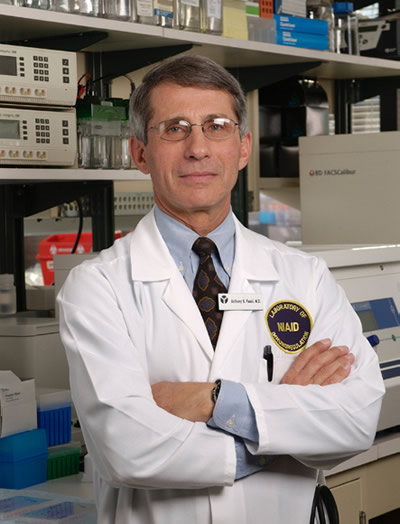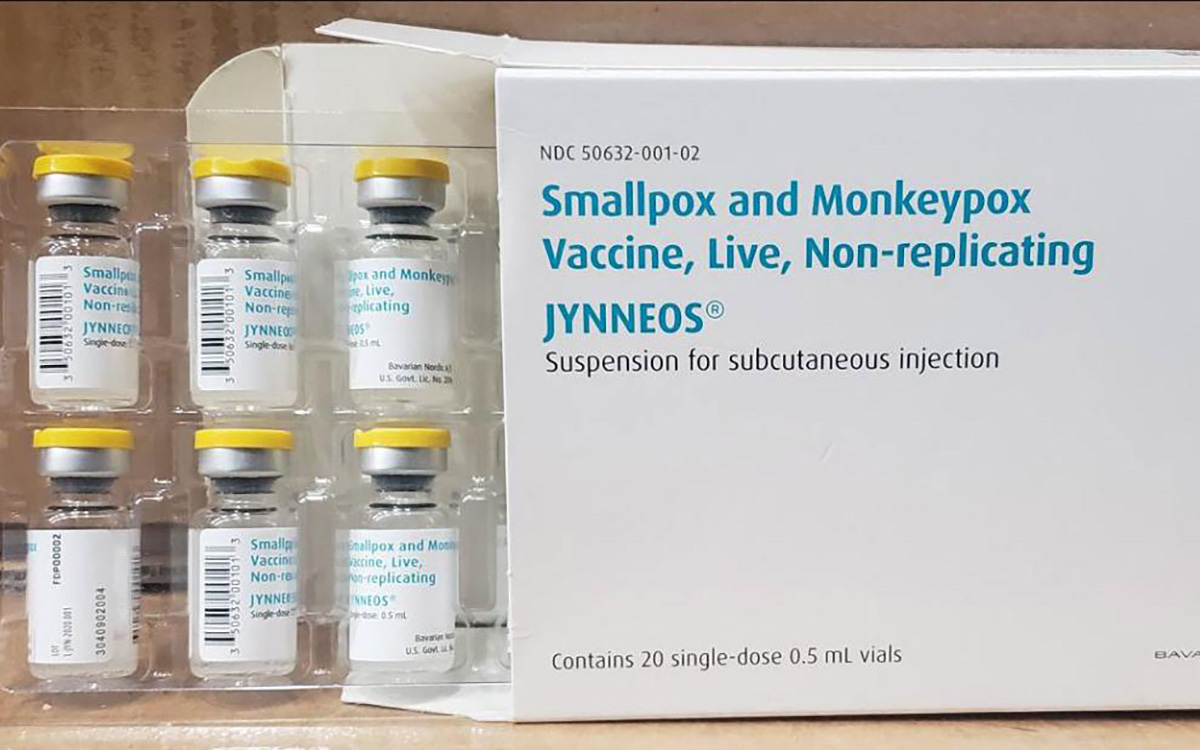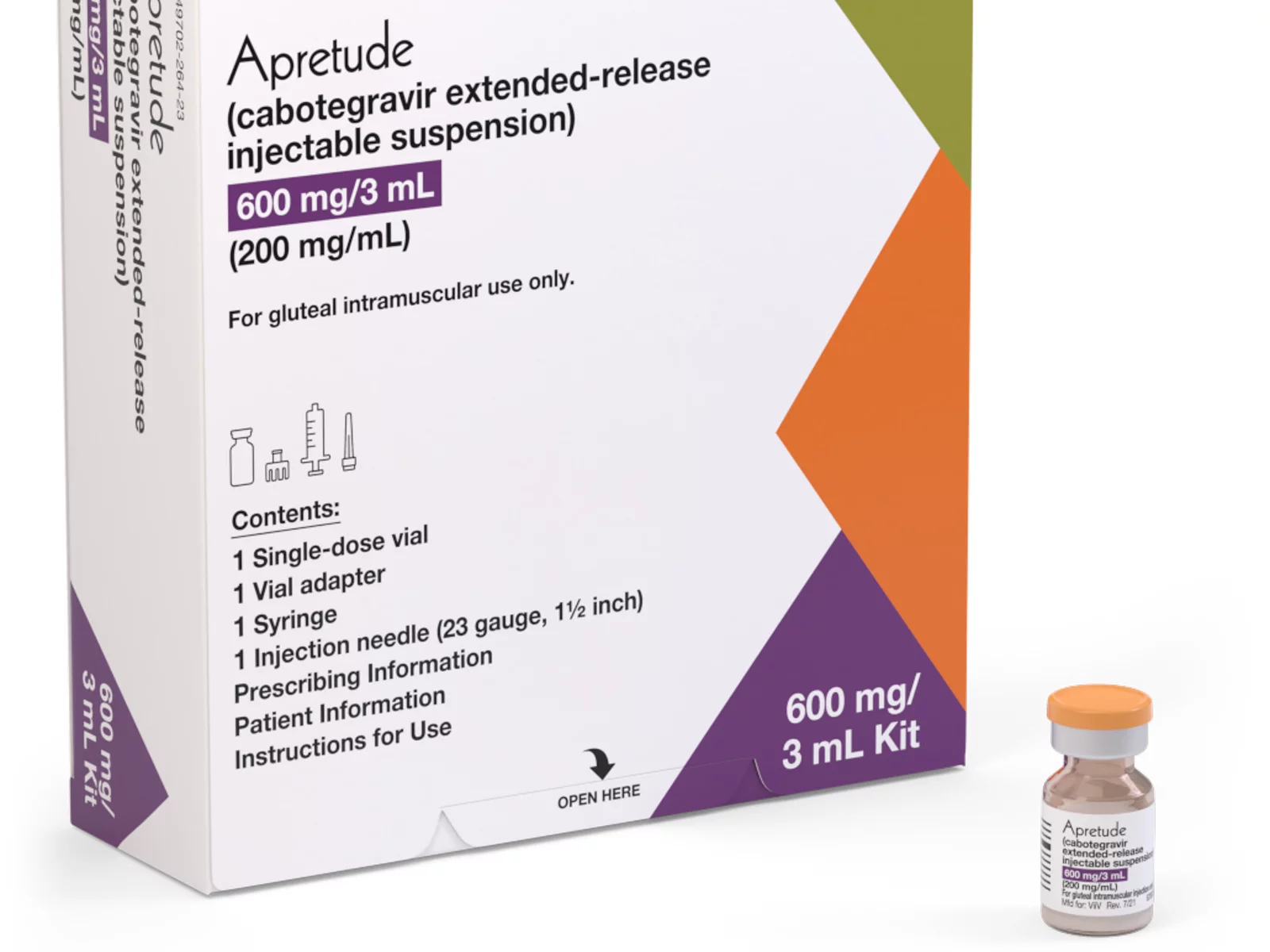Health
Q&A with Dr. Anthony Fauci
Researcher talks about state of AIDS on eve of conference


Dr. Anthony Fauci of the NIH has been involved in the fight against AIDS since the onset of the epidemic. (Photo courtesy NIH)
Dr. Anthony Fauci has been one of the key leaders of the U.S. government’s fight against AIDS for nearly 30 years. Since 1984, Fauci has served as director of the National Institute of Allergy and Infectious Diseases, which is an arm of the National Institutes of Health.
Although his work covers research into other infectious diseases, Fauci serves as one of the lead advisers to the White House and the Department of Health and Human Services on domestic and global AIDS issues, according to biographical information released by the NIH.
He has been credited with developing effective strategies for the treatment of people with HIV/AIDS as well as for the continuing effort to develop an AIDS vaccine.
Fauci spoke to the Blade this week about his hopes and expectations for the 19th International AIDS Conference scheduled for July 22-27 in Washington. About 30,000 people, including scientists, AIDS researchers, government officials, and AIDS activists from the U.S. and abroad are expected to attend the conference.
Washington Blade: Can you say something about what important scientific advances and research findings will emerge from International AIDS Conference in Washington next week?
Dr. Fauci: As in most international meetings of this size it is unusual for there to be a scientific breakthrough of pure scientific nature that hasn’t already been seen, discussed, and vetted out in the press. It is very unusual that a major league breakthrough would all of a sudden be totally timed for discussion at the meeting. So that’s not a negative comment or a positive comment. It just is what it is. Meetings like this have themes and they kind of crystallize and galvanize people around a particular theme.
The Vancouver [International AIDS Conference] in 1996 – the theme of that was the first time that we began discussing in earnest the issue of having a combination of drugs that would get the virus below a detectable level and what impact would that have on the longevity and the lifestyle and functionality of people. That was the big theme of that meeting.
The 2000 [International AIDS Conference] in Durban was can we start getting drugs that we know work in the developed world to the developing world when there were demonstrations in Durban, South Africa.
So rather than there being meetings where there are three or four scientific breakthroughs there really is a sort of consolidation or galvanization around a theme. So the theme of this meeting, as you know, is Turning the Tide Together. They’ve asked me to lead off the opening plenary session on Monday, July 23, with a particular approach to the meeting. In other words, to kind of set the scientific tone of the meeting. And that’s exactly what it is because the title of my talk is “Ending the AIDS Epidemic From Scientific Advances to Public Health Implementation.”
And what you’re going to hear throughout the meeting is various iterations in different regions, in different populations, different demographic groups about the challenges – the biological, behavioral and other challenges – of getting that done. So I’m going to talk about how we went from fundamental scientific discoveries to interventions that you could actually use to help people – mostly treatments and prevention – to how we began to implement them, first in the developed world and then in the developing world.
And now what the science-based possibilities are for actually ultimately ending the AIDS pandemic. Then you are going to hear in rapid succession after that either major talks or just minor presentations of details of that. Like Phill Wilson is going to talk about the perspective from the African-American community. Others will talk about it from different countries – Southern African countries, the Caribbean, Europe, Asia, etc. So that’s going to be the prevailing theme. And then obviously there are going to be other approaches about individual specific, more granular scientific issues like the challenges of an HIV vaccine. We don’t have a vaccine. Where have we come from? Where are we now and where do we hope to go? There are going to be a lot of discussions and panels on that.
There’s a satellite session before the meeting starts on toward an HIV cure. You know, what do we mean by a cure? How does a cure relate to the rest of the things that are going on? What are the scientific challenges of a cure?
So we have a bunch of things that are at the stage of having been developed and they just need to be implemented. So you’re going to hear a lot about implementing programs. And then there are a couple of still existing major scientific challenges, one of which is a vaccine and the other of which is a cure.
Blade: Can you say where we stand on both of those things?
Fauci: Well, with a vaccine we are probably closer than we are to a cure. A cure is still in the very, very formative stages of discovery because we’re not even sure if it’s possible and, if so, how we might go about doing that because of the very special characteristics of this virus. With regard to a vaccine, I still can’t predict when we’ll have one so it’s futile to even put a number on it. But we’ve already had one modestly successful vaccine trial a few years ago in Thailand in what was called RV 144. It’s a trial that showed there was about a 31 percent efficacy in the vaccinated people protecting them. Now that’s not good enough for prime time but since that time — and you’ll be hearing a lot about it at the meeting — there have been a number of projects that have tried to probe into what are the potential correlates of immunity. In other words, what did that vaccine induce in the people who were protected that you might build upon for the next generation of vaccines?
And there will be discussion about identification of certain types of anti-bodies in infected individuals which are called broadly neutralizing anti-bodies that might point us in the right direction of what we would be asking a vaccine to do. So those are some of the things that are going to be discussed vis-a-vis a vaccine.
The cure thing is going to be very basic, like understanding the nature of the HIV reservoir. Are there ways that we can eradicate that reservoir? If we can’t eradicate it are there ways we can either boost up the immune system or modify the host so that their cells are not susceptible to being infected?
Blade: Isn’t that what some of the current treatments do but not to a complete extent?
Fauci: Well they don’t cure it. The current treatments are absolutely sensational in their ability to essentially block the virus’s ability to replicate without eradicating it, but to the point where when people are staying on their medications there’s virtually an undetectable level of virus in the blood of those people.
Blade: Has that been progressing in the last several years?
Fauci: Oh yes, absolutely. The results of treatment and its effect – right now you can essentially mathematically predict a normal life span in individuals who get treated early enough in their infections so that their immune system isn’t completely damaged and they stay on therapy and continue to decrease the viral load. When I was seeing patients every day in the very early 80s — 1981, ’82, ’83 — the median survival of the patients was about six to eight months. Now if someone who’s 25 years old comes into the clinic with relatively recently acquired HIV infection, within the last six months or so, and you put them on appropriate therapy you can predict to that individual that they would likely live an additional 50 plus years.
That’s a spectacular advance in the translation of basic research into a scientific and clinical result.
Blade: Could you say a little about the announcement yesterday that the Food and Drug Administration has approved the use of the AIDS drug Truvada as a prevention drug for people who are HIV negative?
Fauci: I think you need to put the Truvada thing into the proper context. And the proper context is that Truvada has been proven by scientifically based evidence that it works in preventing infection in uninfected individuals if properly used. The one thing you need to make sure you emphasize — it is part now, since it’s been approved by the FDA, of a comprehensive combination package of prevention modalities. It is not to be used as a substitute for standard prevention like avoiding multiple sexual partners, avoiding risky behavior, the proper and consistent use of condoms. This is an additive approach. It’s a very important one because it’s the first time that the FDA has actually approved an anti-HIV drug for prevention rather than just for treatment.
Blade: Has the NIH looked into the use of Truvada as a treatment and how well it works?
Fauci: Oh, it’s been used as one of the best parts – you see, it isn’t the full combination but Truvada is probably the most frequently used component as part of a combination with another drug for the treatment of people who are already infected. So there is a wealth of experience with Truvada.
Blade: Are the side effects generally acceptable?
Fauci: They are generally mild, quite mild. If you look at the spectrum of approximately 30 drugs that are used for the treatment of infected individuals Truvada is way down on the list of minimal side effects. They’re not absent. No drug in the world has no side effects. But they’re generally rather mild – nausea, some abdominal discomfort, some diarrhea, perhaps some weight loss, an occasional headache. And only very rarely do you get toxicity like kidney toxicity. But in general if you rank it they’re relatively non-toxic drugs.
Blade: While most AIDS advocacy organizations appear to support the FDA decision on Truvada, some have raised strong objections. They say it could give the wrong impression that —
Fauci: Well that’s the reason why they say it’s not for everyone. It’s for people in high-risk categories who don’t seem to be responding to the other available prevention modalities. It’s not saying, OK, everybody out there that’s been trying to avoid infection — no sweat, go onto this drug and you can do whatever you want. That’s absolutely not what this means.
Blade: You’ve been involved in the fight against AIDS from the beginning. What is your sense of how our country has adjusted to AIDS over the past 30 years?
Fauci: I think that certainly the stigma that has been associated with this is much, much less than it was back in the early years. There’s no doubt about that. But in certain demographic groups it still lingers, particularly and unfortunately in the African-American population, where being gay and certainly being gay and infected carries much more stigma than you see in the white population. There’s no doubt about that and that’s probably one of the reasons why it’s difficult to get African-American people, men and women, into testing and counseling programs because of the fear of stigma or a variety of other societal factors – socio-economic conditions, etc.
So on the whole we’re doing much, much better but there are still certain subgroups of people that suffer disproportionately. Twelve to 13 percent of the population is African American. More than 50 percent of the new infections occur among African-American men and women, mostly of men who have sex with men.
Blade: What is your sense, then, in comparing all the risk groups that we know now, where does the category of men who have sex with men fit in today?
Fauci: That’s still the major demographic group in this country. Internationally it’s very heavily weighted toward heterosexual. In the United States, men who have sex with men is still the largest category of people who get infected.
Monkeypox
US contributes more than $90 million to fight mpox outbreak in Africa
WHO and Africa CDC has declared a public health emergency

The U.S. has contributed more than $90 million to the fight against the mpox outbreak in Africa.
The U.S. Agency for International Development on Tuesday in a press release announced “up to an additional” $35 million “in emergency health assistance to bolster response efforts for the clade I mpox outbreak in Central and Eastern Africa, pending congressional notification.” The press release notes the Biden-Harris administration previously pledged more than $55 million to fight the outbreak in Congo and other African countries.
“The additional assistance announced today will enable USAID to continue working closely with affected countries, as well as regional and global health partners, to expand support and reduce the impact of this outbreak as it continues to evolve,” it reads. “USAID support includes assistance with surveillance, diagnostics, risk communication and community engagement, infection prevention and control, case management, and vaccination planning and coordination.”
The World Health Organization and the Africa Centers for Disease Control and Prevention last week declared the outbreak a public health emergency.
The Washington Blade last week reported there are more than 17,000 suspected mpox cases across in Congo, Uganda, Kenya, Rwanda, and other African countries. The outbreak has claimed more than 500 lives, mostly in Congo.
Health
Mpox outbreak in Africa declared global health emergency
ONE: 10 million vaccine doses needed on the continent

Medical facilities that provide treatment to gay and bisexual men in some East African countries are already collaborating with them to prevent the spread of a new wave of mpox cases after the World Health Organization on Wednesday declared a global health emergency.
The collaboration, both in Uganda and Kenya, comes amid WHO’s latest report released on Aug. 12, which reveals that nine out of every 10 reported mpox cases are men with sex as the most common cause of infection.
The global mpox outbreak report — based on data that national authorities collected between January 2022 and June of this year — notes 87,189 of the 90,410 reported cases were men. Ninety-six percent of whom were infected through sex.
Sexual contact as the leading mode of transmission accounted for 19,102 of 22,802 cases, followed by non-sexual person-to-person contact. Genital rash was the most common symptom, followed by fever and systemic rash.
The WHO report states the pattern of mpox virus transmission has persisted over the last six months, with 97 percent of new cases reporting sexual contact through oral, vaginal, or anal sex with infected people.
“Sexual transmission has been recorded in the Democratic Republic of Congo among sex workers and men who have sex with men,” the report reads. “Among cases exposed through sexual contact in the Democratic Republic of the Congo, some individuals present only with genital lesions, rather than the more typical extensive rash associated with the virus.”
The growing mpox cases, which are now more than 2,800 reported cases in at least 13 African countries that include Kenya, Uganda, Rwanda, and prompted the Africa Centers for Disease Control and Prevention this week to declare the disease a public health emergency for resource mobilization on the continent to tackle it.
“Africa has long been on the frontlines in the fight against infectious diseases, often with limited resources,” said Africa CDC Director General Jean Kaseya. “The battle against Mpox demands a global response. We need your support, expertise, and solidarity. The world cannot afford to turn a blind eye to this crisis.”
The disease has so far claimed more than 500 lives, mostly in Congo, even as the Africa CDC notes suspected mpox cases across the continent have surged past 17,000, compared to 7,146 cases in 2022 and 14,957 cases last year.
“This is just the tip of the iceberg when we consider the many weaknesses in surveillance, laboratory testing, and contact tracing,” Kaseya said.
WHO, led by Director General Tedros Adhanom Ghebreyesus, also followed the Africa CDC’s move by declaring the mpox outbreak a public health emergency of international concern.
The latest WHO report reveals that men, including those who identify as gay and bisexual, constitute most mpox cases in Kenya and Uganda. The two countries have recorded their first cases, and has put queer rights organizations and health care centers that treat the LGBTQ community on high alert.
The Uganda Minority Shelters Consortium, for example, confirmed to the Washington Blade that the collaboration with health service providers to prevent the spread of mpox among gay and bisexual men is “nascent and uneven.”
“While some community-led health service providers such as Ark Wellness Clinic, Children of the Sun Clinic, Ice Breakers Uganda Clinic, and Happy Family Youth Clinic, have demonstrated commendable efforts, widespread collaboration on mpox prevention remains a significant gap,” UMSC Coordinator John Grace stated. “This is particularly evident when compared to the response to the previous Red Eyes outbreak within the LGBT community.”
Grace noted that as of Wednesday, there were no known queer-friendly health service providers to offer mpox vaccinations to men who have sex with men. He called for health care centers to provide inclusive services and a more coordinated approach.
Although Grace pointed out the fear of discrimination — and particularly Uganda’s Anti-Homosexuality Act — remains a big barrier to mpox prevention through testing, vaccination, and treatment among queer people, he confirmed no mpox cases have been reported among the LGBTQ community.
Uganda so far has reported two mpox cases — refugees who had travelled from Congo.
“We are for the most part encouraging safer sex practices even after potential future vaccinations are conducted as it can also be spread through bodily fluids like saliva and sweat,” Grace said.
Grace also noted that raising awareness about mpox among the queer community and seeking treatment when infected remains a challenge due to the historical and ongoing homophobic stigma and that more comprehensive and reliable advocacy is needed. He said Grindr and other digital platforms have been crucial in raising awareness.
The declarations of mpox as a global health emergency have already attracted demand for global leaders to support African countries to swiftly obtain the necessary vaccines and diagnostics.
“History shows we must act quickly and decisively when a public health emergency strikes. The current Mpox outbreak in Africa is one such emergency,” said ONE Global Health Senior Policy Director Jenny Ottenhoff.
ONE is a global, nonpartisan organization that advocates for the investments needed to create economic opportunities and healthier lives in Africa.
Ottenhoff warned failure to support the African countries with medical supplies needed to tackle mpox would leave the continent defenseless against the virus.
To ensure that African countries are adequately supported, ONE wants governments and pharmaceutical companies to urgently increase the provision of mpox vaccines so that the most affected African countries have affordable access to them. It also notes 10 million vaccine doses are currently needed to control the mpox outbreak in Africa, yet the continent has only 200,000 doses.
The Blade has reached out to Ishtar MSM, a community-based healthcare center in Nairobi, Kenya, that offers to service to gay and bisexual men, about their response to the mpox outbreak.
Health
White House urged to expand PrEP coverage for injectable form
HIV/AIDS service organizations made call on Wednesday

A coalition of 63 organizations dedicated to ending HIV called on the Biden-Harris administration on Wednesday to require insurers to cover long-acting pre-exposure prophylaxis (PrEP) without cost-sharing.
In a letter to Chiquita Brooks-LaSure, administrator of the Centers for Medicare and Medicaid Services, the groups emphasized the need for broad and equitable access to PrEP free of insurance barriers.
Long-acting PrEP is an injectable form of PrEP that’s effective over a long period of time. The FDA approved Apretude (cabotegravir extended-release injectable suspension) as the first and only long-acting injectable PrEP in late 2021. It’s intended for adults and adolescents weighing at least 77 lbs. who are at risk for HIV through sex.
The U.S. Preventive Services Task Force updated its recommendation for PrEP on Aug. 22, 2023, to include new medications such as the first long-acting PrEP drug. The coalition wants CMS to issue guidance requiring insurers to cover all forms of PrEP, including current and future FDA-approved drugs.
“Long-acting PrEP can be the answer to low PrEP uptake, particularly in communities not using PrEP today,” said Carl Schmid, executive director of the HIV+Hepatitis Policy Institute. “The Biden administration has an opportunity to ensure that people with private insurance can access PrEP now and into the future, free of any cost-sharing, with properly worded guidance to insurers.”
Currently, only 36 percent of those who could benefit from PrEP are using it. Significant disparities exist among racial and ethnic groups. Black people constitute 39 percent of new HIV diagnoses but only 14 percent of PrEP users, while Latinos represent 31 percent of new diagnoses but only 18 percent of PrEP users. In contrast, white people represent 24 percent of HIV diagnoses but 64 percent of PrEP users.
The groups also want CMS to prohibit insurers from employing prior authorization for PrEP, citing it as a significant barrier to access. Several states, including New York and California, already prohibit prior authorization for PrEP.
Modeling conducted for HIV+Hep, based on clinical trials of a once every 2-month injection, suggests that 87 percent more HIV cases would be averted compared to daily oral PrEP, with $4.25 billion in averted healthcare costs over 10 years.
Despite guidance issued to insurers in July 2021, PrEP users continue to report being charged cost-sharing for both the drug and ancillary services. A recent review of claims data found that 36 percent of PrEP users were charged for their drugs, and even 31 percent of those using generic PrEP faced cost-sharing.
The coalition’s letter follows a more detailed communication sent by HIV+Hepatitis Policy Institute to the Biden administration on July 2.
Signatories to the community letter include Advocates for Youth, AIDS United, Equality California, Fenway Health, Human Rights Campaign, and the National Coalition of STD Directors, among others.
-

 Federal Government2 days ago
Federal Government2 days agoTreasury Department has a gay secretary but LGBTQ staff are under siege
-

 Virginia3 days ago
Virginia3 days agoDefying trends, new LGBTQ center opens in rural Winchester, Va.
-

 District of Columbia2 days ago
District of Columbia2 days agoGay GOP group hosts Ernst, 3 House members — all of whom oppose Equality Act
-

 District of Columbia2 days ago
District of Columbia2 days agoD.C. police seek public’s help in July 5 murder of trans woman










